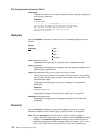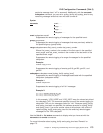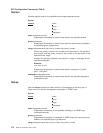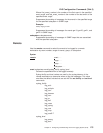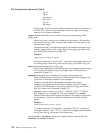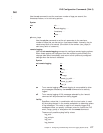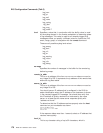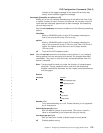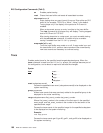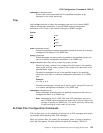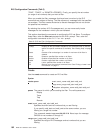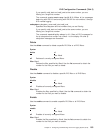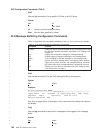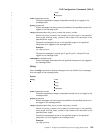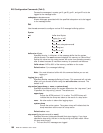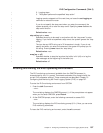
on Enables packet tracing.
reset Clears the trace buffer and resets all associated counters.
stop-event
event id
Stops tracing when an event (event id) occurs. Enter either an ELS
event id (for example: TCP.013) or “None”. “None” is the default.
Tracing stops only if the display of the particular ELS event is
enabled.
When a stop-event occurs, an entry is written to the trace buffer.
The view command for this trace entry will display “Tracing stopped
due to ELS Event Id: TCP.013”.
After tracing stops due to a stop-event, you must re-enable tracing
with the set trace on command. (A restart will also re-enable
tracing if enabled from the ELS Config> prompt.)
wrap-mode [off or on]
Turns the trace buffer wrap mode on or off. If wrap mode is on and
the trace buffer is full, previous trace records will be overwritten by
new trace records as necessary to continue tracing.
Trace
Enables packet trace for the specified event/range/subsystem/group. When the
trace command is used from the ELS Config> prompt, the changes become part of
the configuration, and a reboot is required to activate the changes.
Syntax:
trace
event...
group...
range...
subsystem...
event
subsystem.event#
Causes the specified trace event (
subsystem.event#
) to be displayed on the
system monitoring.
group
groupname
Allows trace events that were previously added to the specified group to be
displayed on the router monitoring.
range
subsystemname first_event_number last_event_number
Where
first_event_number
is the number of the first event in the specified
event range, and
last_event_number
is the number of the last event of the
specified event range.
Causes the trace events in the specified range for the specified subsystem
to be displayed on the system monitoring.
Example:
trace range gw 19 22
Causes the trace events gw.19, gw.20, gw.21, and gw.22 to be displayed on
the system monitoring.
ELS Configuration Commands (Talk 6)
180
MRS V3.2 Software User’s Guide
||
||
|
|
|
|
|
|
|
|
|
|
|
|
|
|
|



